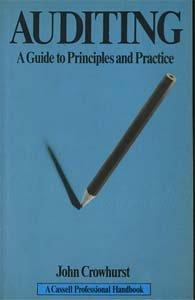


A mysterious stranger in a very official looking suit introduces themselves as Sweeney, loan transference specialist I heard that you have already accrued some college debt. Terrible shame, terrible shame. But there is a silver lining to that dark cloud of accumulating debt, indeed! I have a sweet deal for you! I can transfer that loan. Take care of it completely. Today! Everything has a price of course, but I'm sure you'll be able to pay once you graduate. Instead of the initial amount you borrowed, we'll say you only borrowed a TENTH of it! Imagine! Now, we do expect you to pay it back in a timely manner, so the interest rate with be ten times as much. Please consult the following handy pamphlet explaining the process. My apologies that is a bit dated Sweeney A 2012 Direct Unsubsidized Loan had an interest rate of 3.4%, and tuition was about $10,000 per year (though Direct Loans on average only covered $4,000 per year). After four years of deferment, that would be 10, 000(0.034/12)4 11,454.62. Compare to Sweeney's sweet deal of only $1,000 at 34% interest 1,000(1 + 0.34/12) 48-3, 823.21. That's only a THIRD of what you'd owe without Sweeney's sweet deal! Before you can take the mysterious stranger's sweet deal, a grumpy bystander introduces themselves as Oscar and offers some cutting critiques of this contract Prompts 1. What is wrong with the following argument given by Oscar? Sweeney's sweet deal is only for suckers! The average original Direct Loan was only $4,000. Paying $3,823.21 is barely any savings (not even $200)! bet there are $200 in fees hidden somewhere, so you'd end up owing more! -Oscar 1. What is wrong with the following argument given by Oscar? Sweeney's sweet deal is only for suckers! The average original Direct Loan was only $4,000. Paying $3,823.21 is barely any savings (not even $200)! I bet there are $200 in fees hidden somewhere, so you'd end up owing more! Oscar It seems like Oscar didn't quite hear the entire conversation. The loan being discussed was for $10,000, not $4,000 Make sure to explain (quantitatively) how much of a difference the 10,000 vs 4,000 mistake actually makes. Sweeney's description used $10,000 as the loan amount. How much would Sweeney's sweet deal have cost if the loan had only been $4,000? How does the "THIRD of the cost" stand up to the new loan amount? 2. What is wrong with the following argument, also by Oscar? The halcyon days of 2012! Tuition is $12,000 these days! That extra $2,000 is where you'll lose all your so-called savings Oscar Explain (quantitatively) how much $12,000 would cost after four years using the regular 3.4% interest versus Sweeney's sweet deal. Explain (algebraically) how the "THIRD of the cost" holds up as the loan amount changes. 3. Find an authoritative source for the current federal loan rates (or if you are ineligible for such loans and are inclined to find information more applicable to your own situation, fnd other sources of loans and their interest rates). Make sure you can answer the next question using information from your source. Find an authoritative source for the cost of attending UK for a year. Make sure you can put the $12,000 figure in context. 4. How does Sweeney's deal work with this year's Direct Loan interest rate? Be sure to state the interest rate clearly, and compare paying it back after four years the regular way versus paying it back using Sweeney's sweet deal. (Check your work: Instead of "THIRD of the cost" it should be more like Find an authoritative source for the cost of attending UK for a year. Make sure you can put the $12,000 figure in context 4. How does Sweeney's deal work with this year's Direct Loan interest rate? Be sure to state the interest rate clearly, and compare paying it back after four years the regular way versus paying it back using Sweeney's sweet deal. (Check your work: Instead of "THIRD of the cost" it should be more like "saves you a THIRD of the cost". Be sure you understand the difference; it's a lot of money!) Is it still a sweet deal:? 5. As mentioned above, Direct Loans only cover about $4,000 out of the $12,000. Additionally, you should have found that there are additional costs associated with eating and sleeping. Where does the other $8,000 of tuition come from, or the other approximately $18,000? Many students also use Direct PLUS Loans. Though they have a similar name, they have very different interest rates. How does Sweeney's sweet deal work out for the interest rate for a 2018 Direct PLUS Loan over 4 years? How does the amount of the loan affect this? Describe in simple language how Sweeney's sweet deal compares to just paying it off after four years the regular way. 6. Additionally, many students also use personal Credit Cards to be able to spend money on things besides sleeping and eating. How does Sweeney's deal work out for the average student-targeted credit card interest rate of 21.4% Make a table comparing Sweeney's deal to a "ignore it for four years and hope you can pay it off once you graduate" strategy. Give sample values at interest rates from 2% to 25%. You might find it easier to pick a sample amount (maybe $4,000 or $10,000 or $12,000 or $26,000) in order to make your table, but be sure to explain how the amount of the loan affects your table









